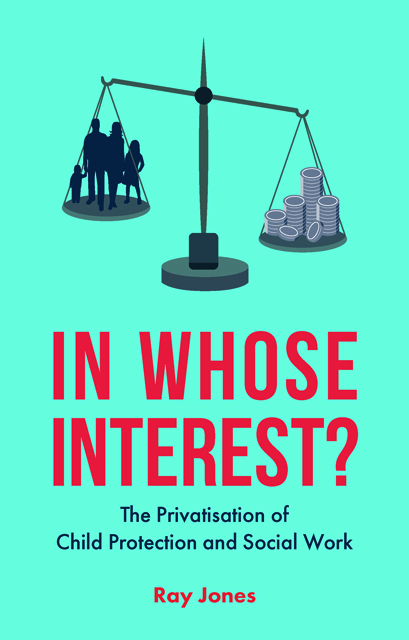ten - The impact to date of the privatisation of social care, social services and social work
Published online by Cambridge University Press: 14 April 2023
Summary
This chapter focuses on a more recent ‘giant’ that was not within Beveridge’s original five giants. Alongside want, ignorance, squalor, disease and idleness, and the additional ‘giant’, identified in the previous chapter, of ‘fear and threat’ is that of neglect.
Since the 1940s, and more so since the 1970s and the creation of local authority social services departments, there has been an increase in publicly funded and public sector provided care services for those who otherwise would be left stranded in a state of neglect. Since before the nineteenth century, there has always been a mixed economy of care services, with charitable and church organisations supplying care alongside state provision. But in the 1980s this balance was to change, as the private sector was promoted by the Thatcher governments and has continued to expand in size and scope.
In the late 2010s the growth of the private sector in what was now often called the ‘care industry’ can be considered within the context of care services, care organisations, and the care workforce. Each has become territory increasingly captured by commercial companies which are seeking to profit from private and public payments for care.
Care for older people
Since the 1980s care services for older people, and to a lesser extent for younger disabled people, have become primarily provided by private companies. The growth in, and now the dominance of, private sector care homes was noted in a House of Commons Library Briefing Paper:
The care home market in England is now dominated by private providers … For over 65 year olds, in 1984 the number of residential care places in local authority-run accommodation for older and physically disabled people peaked at 144,564 (57% of all places), at a time when the private sector provided 66,700 places and the voluntary sector 42,704. However, in 1984, the number of private sector places was approaching double the number in 1980 (37,177), and the rapid expansion of the private sector continued in the following years. By 2017, the number of private sector places had reached 196,600 (76% of all places). Local authority places were just 19,200 (8% of all places), which was under half the number of voluntary sector places (44,400).
- Type
- Chapter
- Information
- In Whose Interest?The Privatisation of Child Protection and Social Work, pp. 231 - 260Publisher: Bristol University PressPrint publication year: 2018



